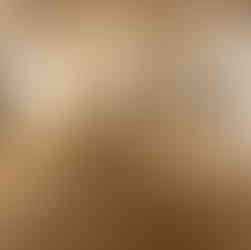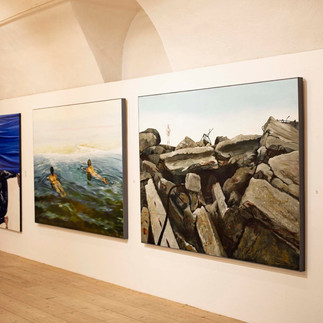Fotod
Eesti Maalikunstnike Liidu kuraatorinäitus
29.04-29.05.2021
Projekt kuulub Eesti Maalikunstnike Liidu rahvusvaheliselt orienteeritud tegevusplaani elavdamaks lähiriikide kultuuridialoogi loomeliitude tasemel näitusetegevuste ja suhtluskorralduse läbi.

Mauri Gross (s. 1969) August Künnapu (s.1978) Laurentsius (s. 1969) Maarit Murka (s. 1981) Karl-Kristjan Nagel (s. 1977) Mall Nukke (s. 1964) Lembit Sarapuu (s.1930)
Kuraatorid: Mall Nukke (idee ja teostus), Tiiu Rebane (nõustamine, korraldus, tehniline teostus)
Näituse pealkiri 7 Eesti kunstnikku määrab näituse sisu ja vormi viidates üsna üksüheselt Aleksis Kivi suurteosele ja EML tegevusplaanile elavdada kahe naaberriigi kunstnikevahelist loomedialoogi.
Näituse keskmes on figuraalne maal, keha ehk inimese kujutamine. Kas arusaamad inimesest, tema kujust, rollidest ja sisust saavad olema naabritele tuttavad ja arusaadavad? Millisena näevad Eesti autorid inimest aastal 2021, millist infot või sõnumit keha kannab ja kuidas vaatajad seda kuvandit mõistavad või enesele tõlgivad. Teha koos näitust ja jääda iseendaks astudes üksteisega dialoogi, see tundub huvitav väljakutse. Kõik need seitse kunstnikku, kes tahavad koos esineda, teevad seda sellel näitusel esmakordselt. Kõik kuuluvad Eesti Maalikunstnike Liitu, on pühendunud aastakümneid maalikunstile. Kõigil seitsmel kunstnikul on seljataga piisavalt pikk ja kogemusterohke loometegevus. Kõikide nende maalikäekirjad on erinevad ja ideed omapärased.
Mall Nukke ja Tiiu Rebane, 2020
Fotod: Mall Nukke (rohkem pilte SIIN)
-----
Press release by Triinu Soikmets:
Seven Estonian painters at HAA Gallery
On date Estonian Painters’ Association will open an exhibition of figure art at HAA Gallery in Helsinki, Finland. Besides the wide range of ways in depicting the nature of human body – both physical as well as non-physical – artworks by seven participating artists play also a symbolic tribute to “The Seven Brothers”, a novel by Finnish national author Aleksis Kivi.
Seven artists who are performing together at the HAA Gallery do this kind of artistic collaboration for the first time. All of them are known for being independent creators and actively performing painters in Estonia for years, their artistic handwritings are recognizably characteristic and their original ideas rise from personal conceptions. The exhibition will let everyone stay on their own as well as to step into a dialogue with each other and the audience.
The gallery space allows to exhibit large-scale of paintings that are created either earlier or specially for this exhibition where also the design of the whole and the arrangement of the works play a big role. This way the portrayal of a man in his perfection and lust, weakness and pragmatism as well as the distinctive, irrational and thought-provoking styles of seven authors reflect all the variations of medium of painting. Good painting is beyond the generations, the "language" of artists lies in the world of colors and bush strokes.
Participating artists:
Mauri Gross's (1969) series of paintings consists of fragments that have a hypnotic effect – the framing of body parts opens a door into a pictorial space where you can easily, in a good sense, get stuck. In such a place time stops and a kind of illusion emerges about human longing for life, which would be free of contemporary suffering and tensions. The viewer seems to b caught in a net and dazed, but not by means of a pendulum or some other classical tool of hypnosis, but he is instead entranced by the artist's faithfulness to detail to which Gross always adds a bit of his typical style-true satire.
Lembit Sarapuu's (1930) paintings are powerful and forceful, his symbols are clear and direct, colours clear and bright. He mixes naivism with surrealism and mythology with naturalism, thus creating often seemingly impossible scenes without false shame and false morals, which have attracted international attention and recognition. Sarapuu whose work emanates something primal and archaic, and who has fantasised about the job of a stone-age cave painter, has already become a phenomenon and a legend. His figurative portraits are certainly a reflection of Estonian fairy-tale national epic, mundane peasant culture and a fine sense of humour.
August Künnapu’s (1978) series examines four basic elements: earth, air, water and fire of which the first three are depicted directly on the paintings while the last one lies in the heart of a viewer. The whole of the elements presents a dream-like composition, inspired by East-European aesthetics of the 1920s and 1930s. This is the way how Künnapu plays with characters from everyday situations, decorating them with joyful colours, historical hints and a touch of mystery behind his characteristic deceptive naïve style.
Maarit Murka’s (1981) installation of paintings turns works of art into targets of animal instinct that serves as a symbol of a person’s inner intimate side hidden under the surface. A sophisticated, multi-layered plexiglass painting technique is used to create an optical illusion that disturbs and does not immediately reveal the content of the work to the viewer. Murka’s high-end hyperrealism together with spatial experiments and mind tricks is on the pedestal here, marking her continuous interest in what it means to be a human being.
Mall Nukke’s (1964) paintings catch both single moments and symbols of eternity, questions about what remains after our physical demise - a metaphysical reflection of things that we have touched or a bodyless being on social media, something bigger or nothing at all? The answers are often sad-ironic and meaningless-transient. Existing and non-existing, as well as beginning and ending are the basics of the circle of life that Nukke conveys while exploring the essence of bodily existence, masterfully capturing every shade of a model’s flesh and bone.
Laurentsius’ (1969) panel is inspired by a remix based on Leonardo da Vinci's notorious masterpiece. After Estonian authors Peeter Laurits and Ain Mäeots staged a thematic photo, Laurentsius created his own, further developed version of it – an over-painted and vandalized graffiti-covered billboard that emphasizes the mentality and idea of the scene. While using his well-known tools of pop-art and pastiche, the whole working process made him feel as if he belonged to the other side of the table, amongst all those intoxicated and fulfilled figures.
Karl-Kristjan Nagel’s (1977) inspiration this time comes from music and cinema stages. In one case it is New York based artist and musician Eartheater alias Alexandra Drewchin, her live performance in Boiler Room or her music video where cold fire erupts against her body. In another case it is Russian filmmaker Andrei Tarkovsky and his film “Stalker” that was filmed in Estonia and told a story of three men heading to the room of wishes. Apocalyptic-style contexts and characters together with deep and expressive manner constitute Nagel’s brand.
Curators: Mall Nukke, Tiiu Rebane
The exhibition is accompanied with a booklet with more information.
---
HAA Gallerian yhteystiedot:
Suomenlinna C1, 00190 Helsinki ti-la 12-18 Tia Takala p. 044 055 1678, tia.takala[at]helsingintaiteilijaseura.fi www.helsingintaiteilijaseura.fi Fb: haagalleria IG: haa_galleria #haagalleria #haagallery #socialportraitexhibition




























Comments